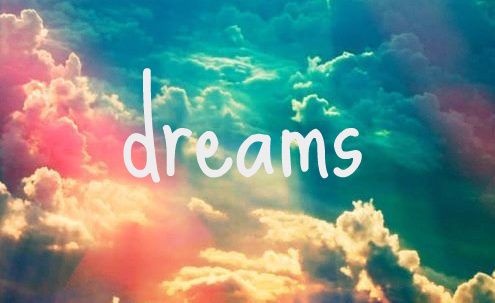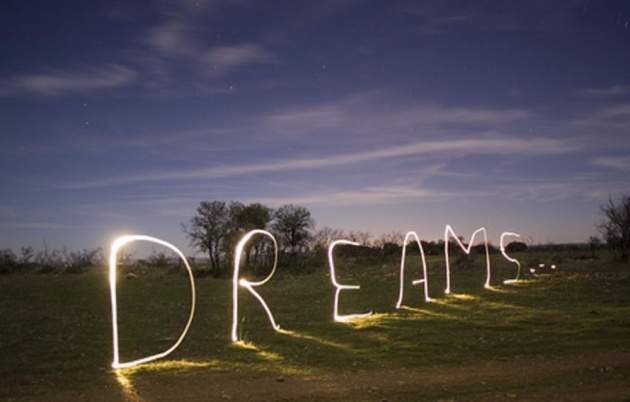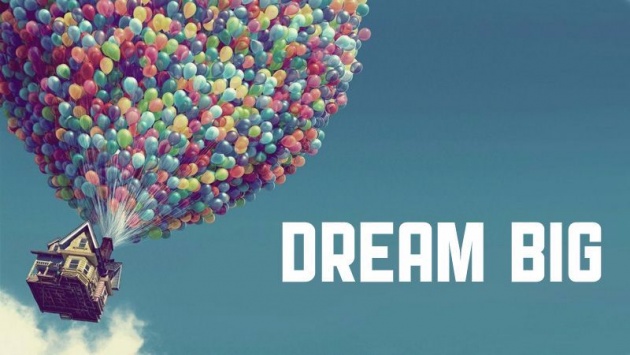
Importance of Dreaming
Sleeping is an important part of the regimen. The sleep cycle consists of the Rapid Eye Movement (REM) and non-Rapid Eye Movement (NREM). The cycle repeats itself four to five times per night but can also go to as many as seven times. Dreams can occur throughout the sleeping duration but the most vivid and memorable dreams occur in the first stage of sleep which is the rapid eye movement. This stage is characterized by the random movement of eye which is the most restorative part of sleep when the mind is being revitalized and emotions are modified and adjusted.
Although sleep is highly important, but so is the content of the sleep. Dreams are highly personal and are the most significant to the individual dreaming it. Dreams do have psychological significance and they may often be an unconscious reflection of the dreamer's internal anxieties, fears, desires, hopes and fantasies. The dreamer can read almost anything into our dreams. As they are constructed within our own minds, they can be attributed certain ideas or thoughts to dreams, or ideas held within them and make them mean what we wish them to. Although many dream theorists have their own point of views related the concept of dreaming. These theories are discussed below and will give an insight on how and what really happens when we dream.

Sigmund Freud
A model suggested by Freud "Iceberg model" where he termed the conscious mind as the tip of iceberg. However Freud believed that some events and desires were so painful for a person to acknowledge that this information was locked in a region he said was the unconscious mind. This occurs through the process of repression. The emphasis on the unconscious mind was to a greater extent and it is the primary assumption to Freudian theory stating that a great amount of our behavior is because of the unconscious mind.
Later work of Freud consists of a structural model of mind that comprises id, ego and superego. They cannot be termed as physical areas within the brain but rather a conceptualization of mental functioning.
According to Sigmund Freud, id functions at unconscious level and comprises of two kinds of biological instincts Eros and Thanatos. Eros is basically the drive that helps and individual to survive. Whereas Thanatos the destructive forces which every individual according to Freud has and when outwardly an individual express it through aggression and violence.
On the other hand ego is developed from id during infancy. Its main aim is to satisfy the demand by id in a more socially acceptable manner. Ego works in both conscious and unconscious mind.
Superego is responsible to ensure that moral standard is followed. It helps and motivates us to be more socially responsible. When superego and id has a conflict, ego can play a mediator role.
According to Freud, dream is the "royal road to the unconscious mind" Freud also stated that dream is the wish fulfillment and also distinguished between what the dreamer remember that is the manifest content of dream and the symbolic meaning of dream that is the underlying wish termed as the latent content. Whatever happens during the day is the manifest content.
Dream work is where the underlying wish is translated to what the dreamer remembers that is the manifest content. The main purpose of dream work is to project the wishes into a non threatening manner this way anxiety is reduced and it allows a peaceful sleep. Three processes are involved in dream works that are displacement, condensation and secondary elaboration.
In the process of condensation, more than two ideas are joined together in one single image or idea. For example if one has a dream about a woman it can be both about his mother and one's lover.
Displacement is when the idea of something is changed to some other thing which will give a person less anxiety or guilt. For example if we look at one of Freud's cases we see one of his patient was extremely indignant of his sister in law and which is why he used to refer to her as a dog and dreamed about strangling a white dog. Now Freud interpreted that because he wanted to kill his sister in law he dreamed about strangling her to death but in a way which did not left with any guilt because the patient thought of strangling a dog. In his unconscious mind the transformation happened to a dog.
Secondary elaboration is when the unconscious mind pictures everything in a very logical manner further enveloping the latent content.
Dream analysis involves the translation of the unavoidable and vague content into a more truthful meaning.

Carl Jung
Carl Jung is one of the most important and widely influential dream theorist. He was Freud's closest friend and disciple. In Jung's view, dreams are a natural manifestation of the current condition of dreamer's mental world. It presents a spontaneous self-portrayal of the unconscious in symbolic form. The symbolic representation is the language of the unconscious. We often have trouble understanding it or associating meaning to it because this language of the unconscious differs from the language of the waking conscious. For example a tiger in the dream may account to aggression or authority.
He claimed that the dreams sometimes portray the relation between dreamer has with the external world, for instance events and activities with people. Jung called this the objective level of a dream's meaning. He also talked about dreamer's inner world. This means that the dream figures are personification of thoughts and feelings of the dreamer itself. This, Jung said, is the subjective level of a dream's meaning.
Jung stated that dreams had two functions. One function is to compensate for imbalances in the dreamer's psyche. For example, if the person is highly intellectual then his dreams may have more emotion oriented content which is bought back from the unconscious; this will strike a balance of conscious and the unconscious. The second function of dreams is to provide potential images of the future (this does not mean dreams can predict future). The dreams can suggest what might happen, what possibilities the future might hold for the dreamer.
One of the most distinctive features of Jung's theory of dreams is his claim that dreams express not just personal contents, but also collective or universal contents. He believed that dreams frequently contain archetypes; universal psychic images that underlie all human thought. Common archetypal figures described by him are the wise old man, the great mother, the trickster, the divine child, and the shadow. Archetypes reflect a natural wisdom deep within the human unconscious minds.
Lastly, Jung believed that dreams function to promote the most important developmental process of human life that is it units the consciousness and the unconscious in a healthy and harmoniously as a whole. Jung calls this process individuation, which means; complete actualization of the whole human being. The archetypal images in dreams can provide the dreamer with special insights and guidance along the path toward individuation.

Freud vs. Carl Jung
Freud and Carl Jung both believed in the existence of an unconscious mind, yet greatly differed in their approaches. Freud believed that neurosis primarily was caused by clashing instincts so are sexual instincts clash with our ability to get on with society and the dream is meant as a back door to get those needs met which otherwise wouldn't be possible. However Jung thought neurosis happens because of repression of an unacceptable trait and becomes a part of unconscious which gains autonomous control over the personality resulting in neurosis.
Freud explained the phenomena of displacement in dreams, which is to let out emotions of something on someone else or associating a particular trait to something. Jung explains the same phenomena and says it the symbolic representation which is the language of the unconscious. He said that dreamers often have trouble understanding it or associating meaning to it because this language of the unconscious differs from the language of the waking conscious.
Freud said that repressions came from child hood trauma while Jung said even though childhood trauma is a major thing people repress but repressions can happen throughout a person's life. Whatever the ego does not want to be associated withis directly repressed into the unconscious. It doesn't necessarily have to happen in childhood.
Freud believed in a person unconscious while Jung believed in a collective unconscious. When it comes to dream symbols, Freud said that they will only relate to the person and the individual meaning that they will put on to it. Jung on the other hand said it will be a mixture of individual meanings picked out from daily life but also those archetypal images would come up in the dreams even if the person has never experienced these archetypal images. This may involve the portrayal of 'the divine child' who represents true self in its purest form or 'the wise old man' who helps the dreamer in difficult situations.
Freud only acknowledged the objective level of dreaming but ignored the subjective level. He did not give much importance to emotional needs of a person. While Jung believed that the true nature of dreams, is to portray both the objective as well as the subjective levels of the dreamer's life. Furthermore Jung agrees with Freud that dreams may look backward to past experience, either what had happened years ago or what had happened on that day but Jung argues that dreams also look forward to anticipate what the dreamer's future developments may be.
Calvin Hall
Another renowned dream theorist is Calvin S. Hall. He argued that dreams are simply a thought or sequence of thoughts that occurred during sleep, and that dream images are visual representation of personal notions. He mentioned five main components of dreams:
The first is the 'Concept of self' which is simply the self-conception of the dreamer. The dreamers will see him as what he is in his waking life. For instance in his dreams he sees himself as a rich influential leader but as the dream progresses he loses his power to rivals and is unable to maintain his demeanor. This dream will portray the concept of self of the dreamer as someone who is fails to maintain his strength and potency.
Second is the 'Concept of others.' The dreamer will see the people he knows in his dreams as he perceives them in his real life. For instance he sees his friends as selfish and egoistic then in his dreams he will see them as threatening and authoritative. The dreamer may commonly dream about being attacked by other men, this may displays a conception of enmity that exists in males for other males. If the dreamer conceives of his mother as a stern demanding and autocratic in nature, the mother will be assigned a part in the dream that is in keeping with this conception.
Third is the 'Concept of the world'. This particularly means the environment of the dream. It depends on the dreamer's mood which is in context to his current life situation. If the dreamer feels agitated, stressed and faces problems in his waking life then he will dream of thunderstorms, raging seas, traffic jams and clamorous crowds. But if the dreamer feels calm and relaxed, he may see beaches and serene natural beauty.
Forth is the 'Concept of impulses, prohibitions and penalties.' The dreamer may only do things in his dreams that he is allowed to do in his real life and will prohibit himself that he is not allowed. The dreamer will have a dream with some type of problematic situation or obstacle. Within the dream, he will have impulses, or urges, to do something. The manner in which the dreamer overcomes that obstacle in order to fulfill his urge reveals what the dreamer believes is allowed and what is prohibited. If he believes something is okay to do, then the dreamer will do whatever that is in order to fix the problem and fulfill his urge. For example, the dreamer may have sex impulses and will fulfill it by carrying out the activity with only his girlfriend.
The last is 'Concept problems and conflicts.' It refers to the real-life problems and struggles the dreamer is experiencing. Dreams give the dreamer an inside view of his problems and conflicts, which is more detailed and superfluous than what the person experiences in waking life. This give hints to the dreamer on how to solve the struggle he is undergoing.
Freud vs. Calvin Hall
Calvin and Freud both agreed on the relation between unconscious mind and dreaming but Freud stated that the unconscious is a store of the repressed memories, desires and urges. If these memories, desires and urges came to the conscious it will cause troubles and problems for the person as the content in the unconscious is not socially acceptable. Dreams act as a catharsis for the unconscious mind. On the other hand Calvin did believe in the urges and desire of the unconscious mind but he said that these urges will only be fulfilled in the dream in an acceptable manner. Dreamer will fulfill his urge in what the dreamer believes is allowed and what is prohibited.
Alfred Adler
According to Adler, dreams are a pathway to our true thoughts emotion and our action. He believed that dream shows us a way to our desire and aggressive impulses. His view towards dream was a way of satisfaction that might be more socially acceptable
Looking towards the idea that Adler gave "the will to power", he believed that main thing that drives us in life is to overcome our insecurities, inferiorities and imperfections. He believed that all this inferiority complex was based from our past when a child or infant was powerless. The entire life according to Adler one struggles to compensate that lack in order to gain more control of lives. He further discussed the idea by saying that an individual is more conscious than unconscious. What we do is more linked to our conscious mind than unconscious
Dreams as according to Adler were a way of wish fulfillment where we can safely face things that we might not be able to do so or which might scare us. Our insecurities are addressed in a more compensating manner. His dream analysis mainly focused on what basically the problems or inferiorities the dream represented. Reacting to those dream elements represents a way how we might act towards that issue. Basically a way to prepare ourselves or might just be a wish fulfillment method.
For example if someone has a dream about falling from a mountain, this can be looked with several perspectives might be that the person is about to fly. It can however be considered in another manner that a person is scared to feel embarrassed in a social gathering. If the dreamer has been caught by someone he or she does not know that can have a further spiritual meaning added to it that he or she is referring to some they can blindly trust.
By showing as to how we deal with situations and problems, dreams give us an idea of or personality and our life.

Freud vs. Adler
Looking at the two theories, Freud's psychoanalysis and Adler's theory of individual psychology we can see many differences.
- Freud splits the personality into components whereas when we look at Adler's work he talks about individual as a whole.
- According to Freud Conscious and unconscious were separate whereas Adler believed that both of them worked together in harmony.
- Freud believed that an individual's unconscious cannot be controlled whereas Adler believed that it's just what an individual is not aware of.
Limitation to each theory
Sigmund Freud
When we look at Freudian theory we can generalize into 3 main categories:
- The theory relies a lot on therapeutic achievements; the clinical data collected is flawed in a way that it is inaccurate due to the number of cases and geographical factors also the data was selected at its best.
- Then the criticism lies at the interpretation of dreams and role of free association.
- Lastly it is also said that psychoanalysis is not a science and many principle upon which it is based are inaccurate.Eysenck and Wilson (1973) there is not one study which one could point to with confidence and say "Here is definitive support of this or that Freudian notion."
Carl Jung
When we look at Jung's theory we see he was not concerned with proving any of his ideas. All his theory was built by self-evident and his personal experiences. Jung's theory was not proven by any scientific evident. For example, he said that the shadow has the deepest roots and is the most dangerous and powerful of the archetypes (Gerald Corey, 2005). The shadow has the deepest roots; this now cannot be proved by any scientific method because it is a myth.
Calvin Hall
The only limitation that can be seen in the dream theory of Calvin Hall is that it does not talk about dream recall. Not only Hall but most dream researchers ignore the proper retrieval method that should or needs to be followed. They ignore the part of memory plays which can often be highly unpredictable in dream material retrieval.
Alfred Adler
The main weakness of the theory is found to be its lack of an inherent instance of truth that shows the dreamer the way to a better and more feasible life style. Adlerian dream interpretation in the original sense intended by Adler is practiced nowhere by psychotherapists today and seems largely antiquated.
References:
" Samuels A. 1985. Jung and the postjungians. London: Routledge&Kegan Paul. Describes postJungian dream theories.
Available at: www.dreamresearch.ca/pdf/jung.pdf
" Hall, C. S. (1953). A cognitive theory of dreams. The Journal of General Psychology, 49, 273-282. Abridged version in M. F. DeMartino (Ed.). (1959). Dreams and Personality Dynamics (pp. 123-134). Springfield, IL: Charles C. Thomas.
Available at: www2.ucsc.edu/dreams/Library/hall_1953b.html
" STEPHEN KLEIN .2013. Alfred Adler
Available at: dreamstop.com/alfred-adler-dream-theories/
" McLeod, S. A. (2013). Sigmund Freud
Available at: www.simplypsychology.org/Sigmund-Freud.html




